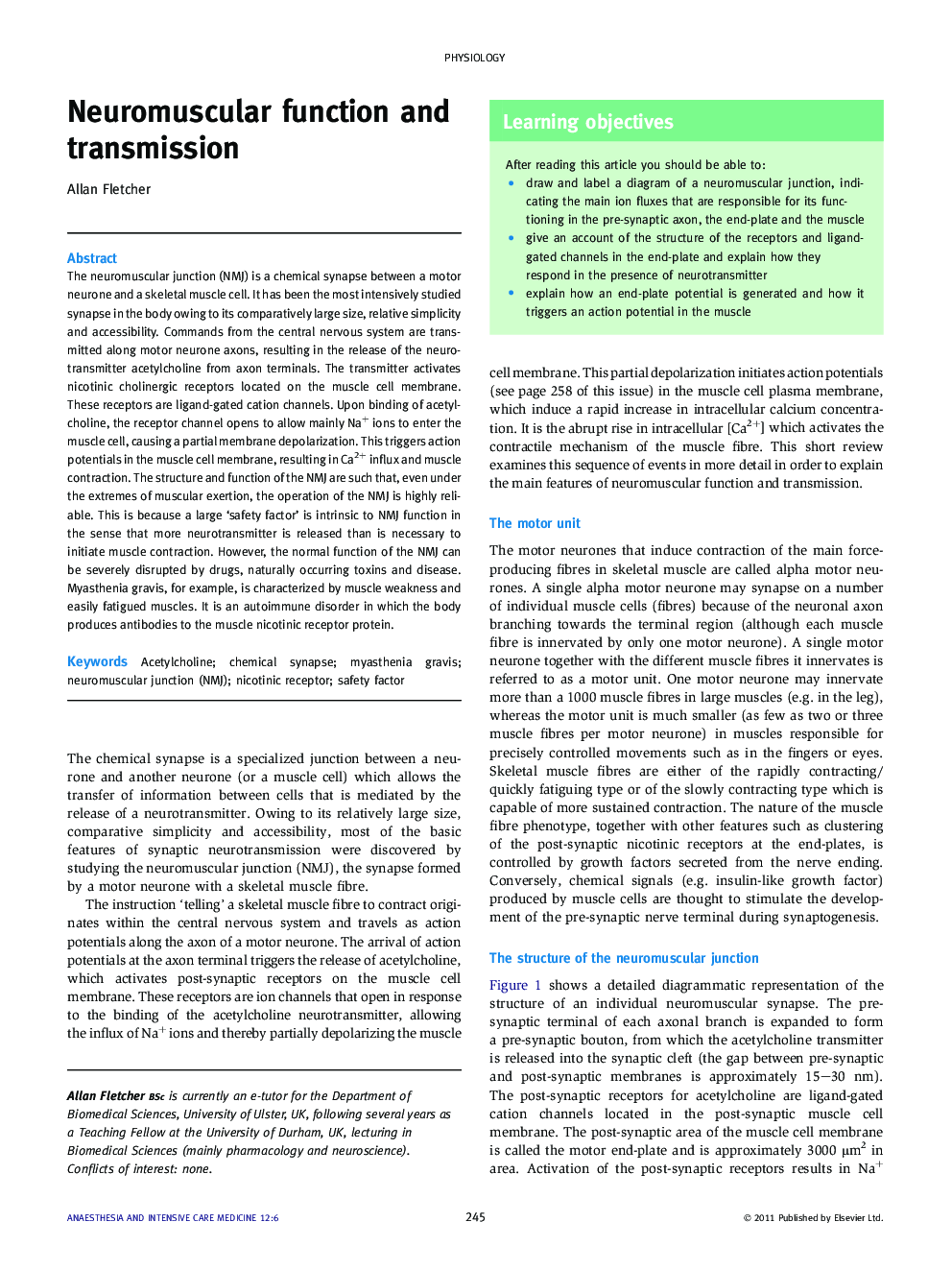| Article ID | Journal | Published Year | Pages | File Type |
|---|---|---|---|---|
| 2742667 | Anaesthesia & Intensive Care Medicine | 2011 | 4 Pages |
The neuromuscular junction (NMJ) is a chemical synapse between a motor neurone and a skeletal muscle cell. It has been the most intensively studied synapse in the body owing to its comparatively large size, relative simplicity and accessibility. Commands from the central nervous system are transmitted along motor neurone axons, resulting in the release of the neurotransmitter acetylcholine from axon terminals. The transmitter activates nicotinic cholinergic receptors located on the muscle cell membrane. These receptors are ligand-gated cation channels. Upon binding of acetylcholine, the receptor channel opens to allow mainly Na+ ions to enter the muscle cell, causing a partial membrane depolarization. This triggers action potentials in the muscle cell membrane, resulting in Ca2+ influx and muscle contraction. The structure and function of the NMJ are such that, even under the extremes of muscular exertion, the operation of the NMJ is highly reliable. This is because a large ‘safety factor’ is intrinsic to NMJ function in the sense that more neurotransmitter is released than is necessary to initiate muscle contraction. However, the normal function of the NMJ can be severely disrupted by drugs, naturally occurring toxins and disease. Myasthenia gravis, for example, is characterized by muscle weakness and easily fatigued muscles. It is an autoimmune disorder in which the body produces antibodies to the muscle nicotinic receptor protein.
